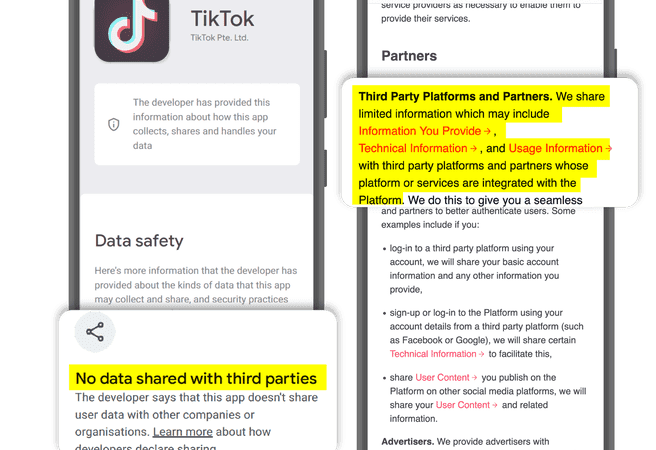
Regardless of which cloud computing vendor’s cloud service is used, it makes business sense for an organization to migrate applications to a cloud platform.
What’s next for cloud computing?
There are more and more successful cases of cloud migration, and public cloud providers are significantly increasing capacity and adding new services. However, some organizations have started talking about “cloud repatriation,” in which organizations move certain services back to their on-premises infrastructure. There is also the development of the Internet of Things to consider. Does the need for IoT devices to process information in real time make cloud computing latency a problem?
Every cloud computing vendor wants its own cloud services as a solution to meet the needs of every organization. So for organizations that lack server and storage sales, cloud repatriation may be wishful thinking. It is suitable for specific use cases such as Dropbox or Netflix. These organizations set up their own data centers after doubling sales and driving up the cost of public clouds. It may also be appropriate for very consistent and stable workloads that do not require scaling, although these efforts can use reserved instances to ensure that cloud computing costs remain manageable. This could be the result of a failed attempt to move the service to a cloud platform, such as after building the wrong architecture.
According to industry experts working with customers in various industries and the experience of running various applications, the adoption of cloud computing technology is still the ultimate goal, and migrating applications to cloud platforms has full commercial significance. However, this is not all SaaS, and it is definitely not a one-size-fits-all approach. Each organization needs to find its own solution based on the applications used, the amount of data processed, and the organization’s future business strategy.
For most organizations, the future will be a hybrid cloud, which will make multi-cloud management a key requirement. The continued development of containerization and the overall Kubernetes agreement on orchestration between major cloud computing providers will make applications truly portable, thereby encouraging migration between cloud computing providers to play a key role. Edge computing is necessary for IoT and smart devices, but the data analysis of these devices benefits from the scale and flexibility of centralized cloud computing processing and storage.
Three principles to avoid cloud repatriation
To properly use cloud computing technology and avoid any potential repatriation needs in the future, organizations need to understand three things.
First, cloud computing is not a single concept, meaning different things to different organizations. It works for most applications, but it’s not the best way to solve all problems, other options still work. Cloud computing applications are designed around assumptions that may not apply to some organizations and how they work.
Second, migrating to a cloud platform is not only an IT transformation. It also requires a refocusing of the business and requires new skills and new ways of working to succeed.
Third, unless organizations radically redesign how cloud computing works, cloud computing will hardly save organizations money. Although the cloud platform replaces on-premise IT operations, it creates the need for new skills, such as billing management and managing cloud services from one or more cloud computing providers.
Applications will drive cloud platform migration
When considering cloud computing, SaaS should be the first choice. A quality SaaS service will provide everything an organization needs, and it will be easy to use, and it will cost about or less than the cost of an on-premise service. Of course, every cloud computing vendor wants organizations to adopt their SaaS, which is the best result if the organization can use it seamlessly. Organizations need to consider where to keep their data? Is it secure? And how SaaS solutions work with other business-critical applications.
For example, Microsoft Office 365 is actually a SaaS that makes sense for most organizations using Exchange, SharePoint, and MS Office. However, other systems can have some impact. Office applications in the cloud platform are automatically patched and upgraded. This means that if an organization has another application that integrates only with an earlier version of Office, it may be because the vendor has not yet developed an upgrade or no longer supports it, and sometimes will no longer talk to Office applications. If not prepared in advance, this can be a major problem.
If SaaS is not available, the next best option is PaaS, and organizations can install applications on top of a hosted database service or development environment. This requires applications to use the latest, widely supported databases, such as Oracle, SQL Server, or MySQL. PaaS services in Informix or ProgressDB environments that are 15 years old are hard to find.
A third option is hosting on IaaS, which means that mobile applications can be enhanced as-is or with smaller enhancements to operate through the cloud provider’s infrastructure. The sole responsibility for on-premise retention is license and support from the application provider. Alternatively, it can be run by a managed service provider who will handle all the complexity.
The last option is to configure IT as a private cloud and run on-premises data centers to migrate to SaaS when a suitable solution is available. Some applications cannot be migrated in the short or medium term because specific dependencies require a lot of work to eliminate. When choosing between paying a few thousand dollars per year to host an application as is or the cost of redeveloping it using an open API for cloud computing PaaS, the balance between benefits and returns is obvious .
Containerization will help resolve vendor lock-in issues
Once an organization moves services to a cloud platform and has phased out its internal infrastructure, it must accept the services of the selected cloud computing provider unless it migrates again. Compared with IT vendors, cloud computing vendors are more locked-in, and moving services between vendors is not an easy task, because their cloud services cannot be directly compared. Cloud computing vendors will naturally focus on their short-term revenue, not how the applications work together in the long run.
Fortunately, the growing use of containers has made it easier to move applications between cloud computing providers, although this does not apply to legacy applications that need to be radically redeveloped. Cobol doesn’t get into containers easily, and Python makes it easier.
Since Kubernetes container management is now supported by all major cloud computing providers, organizations that have redeveloped container-oriented applications will be able to take advantage of cloud proxy services between cloud computing providers. If the organization has the capability, it can be implemented in an on-premises data center or it can be provided by a third party.
Edge computing will still benefit from cloud computing
Although experts firmly believe that cloud computing has more benefits for many applications, they hope to see more and more smart devices (such as robotics in manufacturing) return to decentralized management. In fact, these devices are themselves small data centers that need to process information in real time, so for them, cloud computing latency is becoming a major issue and the demand for edge intelligence will increase.
This is just a reimagined on-premises calculation. The next step in the conventional wave of centralization and decentralization featuring IT over the past 40 years. The growth of edge computing certainly does not mean that cloud computing is dying.
Each organization will need to consider their own use cases and choose the most appropriate solution based on how much real-time processing they need. All of this will benefit from the scale and flexibility of centralized cloud computing processing and storage, which benefits from construction companies uniting to deliver specific projects, such as Crossrail and HS2, which require capacity in a limited time, and public sector organizations can Give regular applications to cloud computing providers to focus on core activities.
Even organizations working on the cutting edge of robotics and artificial intelligence technologies will benefit from the scale and capacity of cloud computing. However, their smart devices need to rely on artificial intelligence technology supported by cloud computing services.











